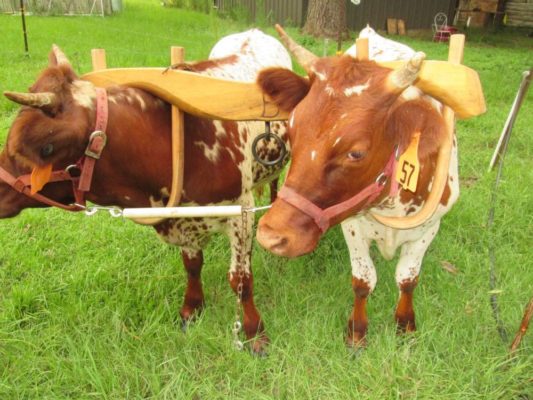History of the Pineywoods Cattle Breed
“Pineywoods” “Piney Woods”
“Woods Cattle” “Rakestraw Cattle”
America’s Original Cattle
In the early 1500’s the Spanish brought their native Iberian cattle to the new world. Extremely self sufficient, they were raised on the land with very little influence from the cattlemen themselves, being driven from one area to another only by necessity.
Pineywoods (also known as ‘Woods cattle’ and ‘Rakestraw cattle’), Florida Cracker, Cattlemen’s Texas Longhorn and the Corriente are all direct decedents of the Iberian cattle. These Criollo cattle breeds (Spanish cattle born in the new world) were adapted and shaped by nature and necessity to fit almost seamlessly into the early American southeast.
Pineywoods cattle were predominantly raised in the Georgia, Mississippi and Alabama region, along with a few other places. On large range land rarely handled by the cattlemen, the breed was extremely self sufficient, practically wild. Over time they became well adapted to the thick, wet and humid landscape of the area. They were originally used for beef and some dairy. With the boom of the timber industry Pineywoods oxen became a staple part of everyday work life.
In the late 1800’s, imported English and other ‘improved’ European cattle were becoming more and more popular. Many of the oxen and beef herds were cross bred from these new (larger) cattle, eventually replacing them all together.
At the same time English draft horses were fast becoming the new symbol of the timber industry, vastly out performing oxen.
In some case Pineywoods were cross bred into the new cattle breeds from Europe in order to attempt to keep the rugged heat tolerant qualities, but they largely became unheard of.
Stock Law
In 1968 the Mississippi Stock Law that prohibited the free range of livestock was approved.
Up until this point most ranchers relied heavily on the natural resources of state owned land. Tens of Thousands of cattle made their way to the stock yards and slaughter houses, The ranchers not having near enough land to keep them. This inevitably lead to the loss of a considerable amount of genetics, and resulted in ranchers only continuing to work with much smaller numbers of cattle.


